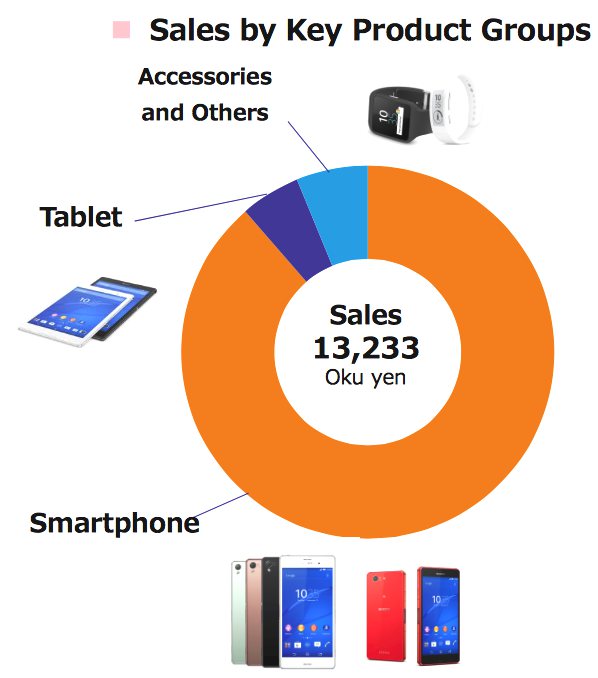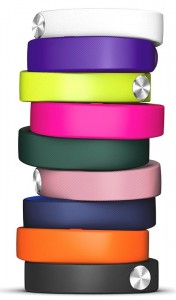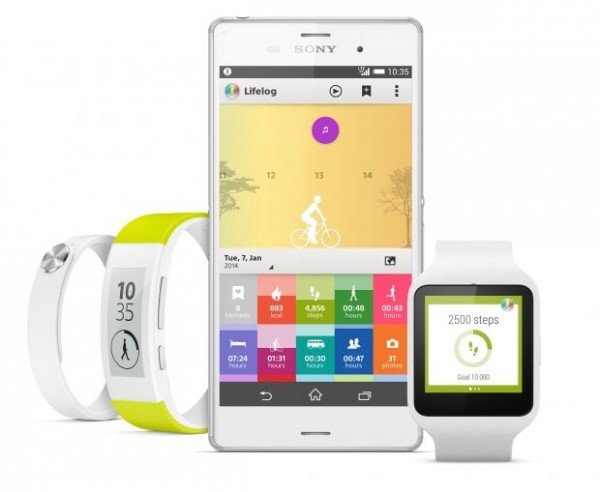
It’s not breaking news that Sony Mobile has been struggling. Once destined to be one of the three pillars of Sony, the ever important mobile division has instead been a cause for financial loss at Sony. In just the past two years, not only has Sony Mobile not been able to move forward and grow, but it has also retreated and lost ground.
More on this after the jump, including how Sony can recapture the smartphone market and make ways with their wearables.
 Ideally, for a healthy company operating in the mobile space, their product portfolio would consist of a mix of smartphones, tablets, and the ever growing wearable market which includes watches, fitness trackers, and other small ‘smart’ devices. Unlike a company like Apple, Sony actually offers a multitude of wearables which range from their SmartBand collection for fitness junkies to their SmartWatch series, and even tennis sensors.
Ideally, for a healthy company operating in the mobile space, their product portfolio would consist of a mix of smartphones, tablets, and the ever growing wearable market which includes watches, fitness trackers, and other small ‘smart’ devices. Unlike a company like Apple, Sony actually offers a multitude of wearables which range from their SmartBand collection for fitness junkies to their SmartWatch series, and even tennis sensors.
As the chart above shows, despite offering an extensive amount of products, Sony is seemingly making little headway in sales with wearables with smartphones making up well over 80% of their mobile division sales. This for Sony should be a worrying chart as the wearable market represents a hot and growing market with prices far lower than smartphones and tablets which makes them more ripe for purchasing.
In an ideal world, a brand will be able to create a hit product and use it as a gateway to introduce their other product ranges. If you purchase an iPhone, you’re more likely to purchase a MacBook and an Apple Watch. Same goes for Sony where those with an Xperia device are far more likely to be interested in the Sony SmartWatch Steel Edition or look for a 4K Bravia the next time they’re at Best Buy.
 Sony lacks that gateway product which would otherwise draw consumers in. While PlayStation is extremely popular, it doesn’t translate to Sony’s other products – which brings us back to mobile. For many companies, mobile is the key to a greater ecosystem. Arguably, your smartphone is the most important device you own; one that can drive your entertainment experience at home and even control it. In fact, a smartphone is the new hub where most devices, like a watch or tennis sensor, send their data to be viewed.
Sony lacks that gateway product which would otherwise draw consumers in. While PlayStation is extremely popular, it doesn’t translate to Sony’s other products – which brings us back to mobile. For many companies, mobile is the key to a greater ecosystem. Arguably, your smartphone is the most important device you own; one that can drive your entertainment experience at home and even control it. In fact, a smartphone is the new hub where most devices, like a watch or tennis sensor, send their data to be viewed.
Arguments have been made that one of the reasons Sony is failing at mobile is because of how late they were to it when compared to others. Be it true or not, Sony internally made the decision to not miss out on the next wave, wearables, and for the past two to three years has released an extensive amount of products. At the expense of sounding like a broken record, the above chart shows that their efforts have born little fruit for the company and the reason is, once again, smartphones.
While Sony has been chasing the wearable market, they’ve continued to lose out on the greater mobile market. All of this is especially a shame when you consider that a lot of the products they make are in fact quite wonderful. Fearing another lost opportunity, Sony has been investing in a market that they have little chance at penetrating, seeing how they’re losing out in the larger market which wearables is a part of.
Instead of creating yet another smartwatch that will yield low sales or producing a fourth line in their SmartBand lineup, Sony needs to completely rethink and reinvigorate their smartphone division. That means fewer but more class-leading devices. Every dollar not spent on a new wearable that lacks any form of marketing to begin with should be invested to grow their mobile division.

When Steve Jobs came back to Apple, he faced a similar dilemma when launching iPod, a device that helped turn around the company. When looking to launch iPod, Jobs decided to spend an astronomically higher amount on marketing the device than it made sense to. When most products are launched, companies tend to allocate a certain budget for marketing which they count towards the cost of the device. In turn, they hope that marketing helps bring in more people towards the product and not only pay for its cost, but also help drive higher sales which would not be possible withiout a broad awareness for the product.
At face value, spending an absence amount of money on marketing which could eclipse the return you expect to see on a product might sound insane. Jobs instead saw this as an opportunity to not only launch iPod, but reintroduce Apple to the world. Jobs also had the insight knowledge of the roadmap that would follow iPod and how all these devices would compliment each other.
Sony is too busy spending and releasing products that, though not reliant on Xperia phones, could use help from the brand recognition and built-in audience which they currently lack. Instead, Sony is hoping that, by being in all the relevant markets, one of their products will eventually catch on with consumers and perhaps create a halo effect back to their other products.
After five years, I believe it’s quite apparent that their strategy isn’t working. Sony needs to double down on smartphones and reintroduce their Xperia devices to the world. While the company has done wonderful things on social media, they’re still missing the majority of consumers who watch TV and browse the malls, and commute to work with an extensive marketing push which would include commercials, billboards, and retail partners. As I like to say to friends, Sony is possibly one good marketing campaign away from success.
If Sony can learn how to market their products and focus on their roadmap by growing their smartphone division, then the burden of entering the wearable market eases by multiple folds as they’ll already have a tuned-in audience. And, for those not aware, as the Sony brand becomes more common to the ear and eye once again, so will consumers’ interest towards Sony products the next time they’re browsing at Best Buy or shopping on Amazon. After all, doesn’t the above Sony 4K TV commercial make you want to buy it?
Discuss:
Do you think Sony’s lack of penetration in wearables is directly related to their troubles with smartphones?
